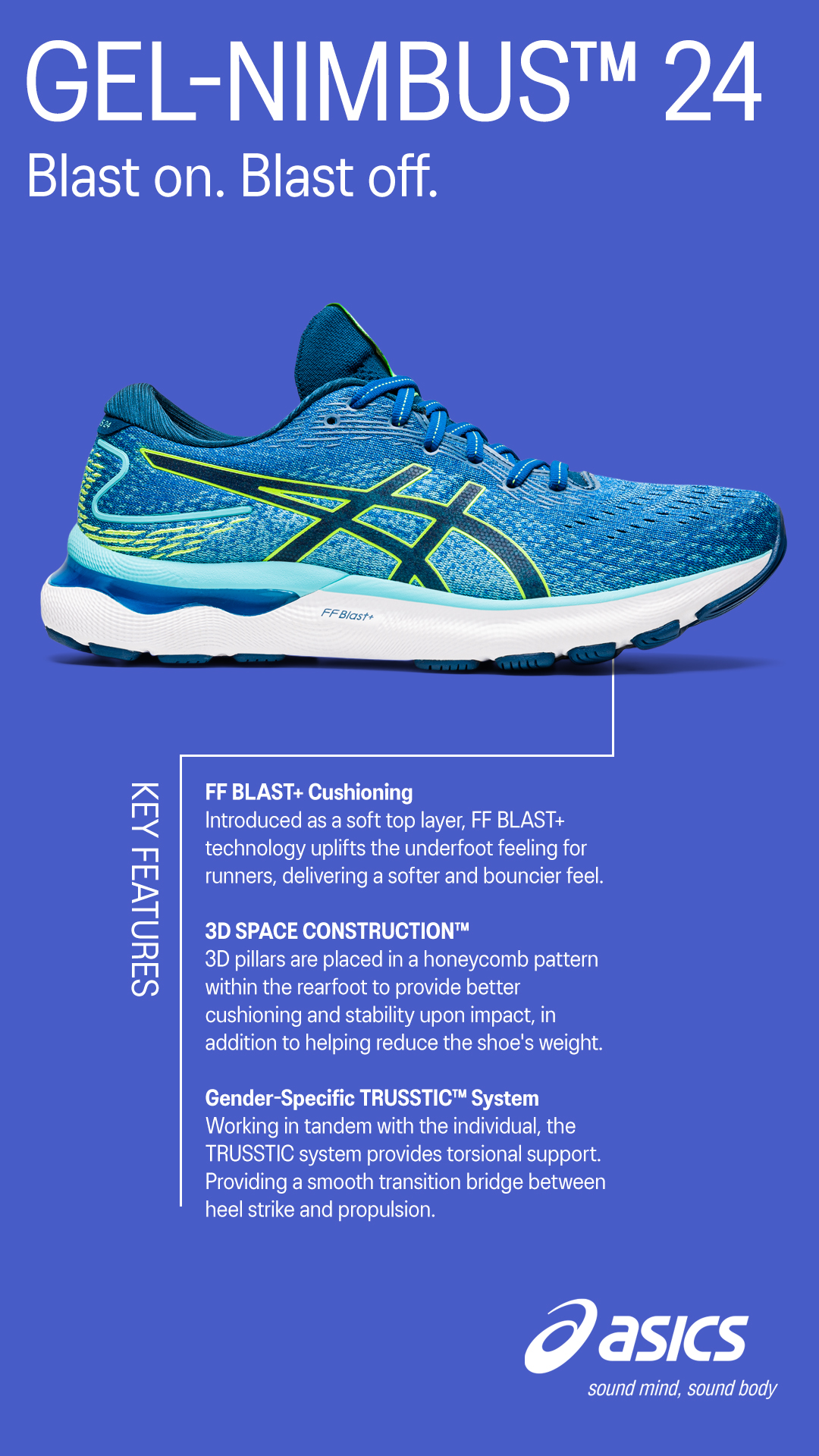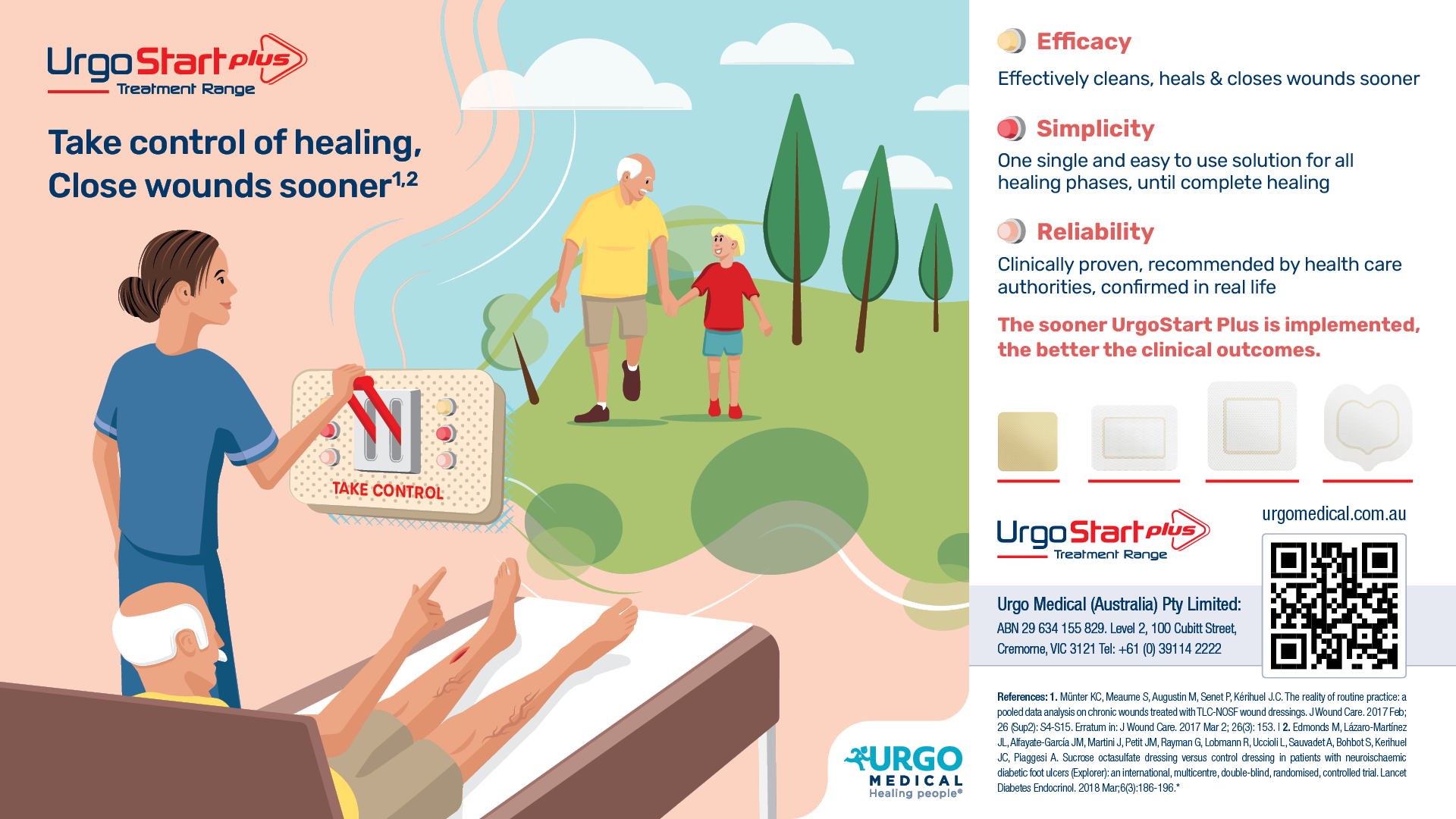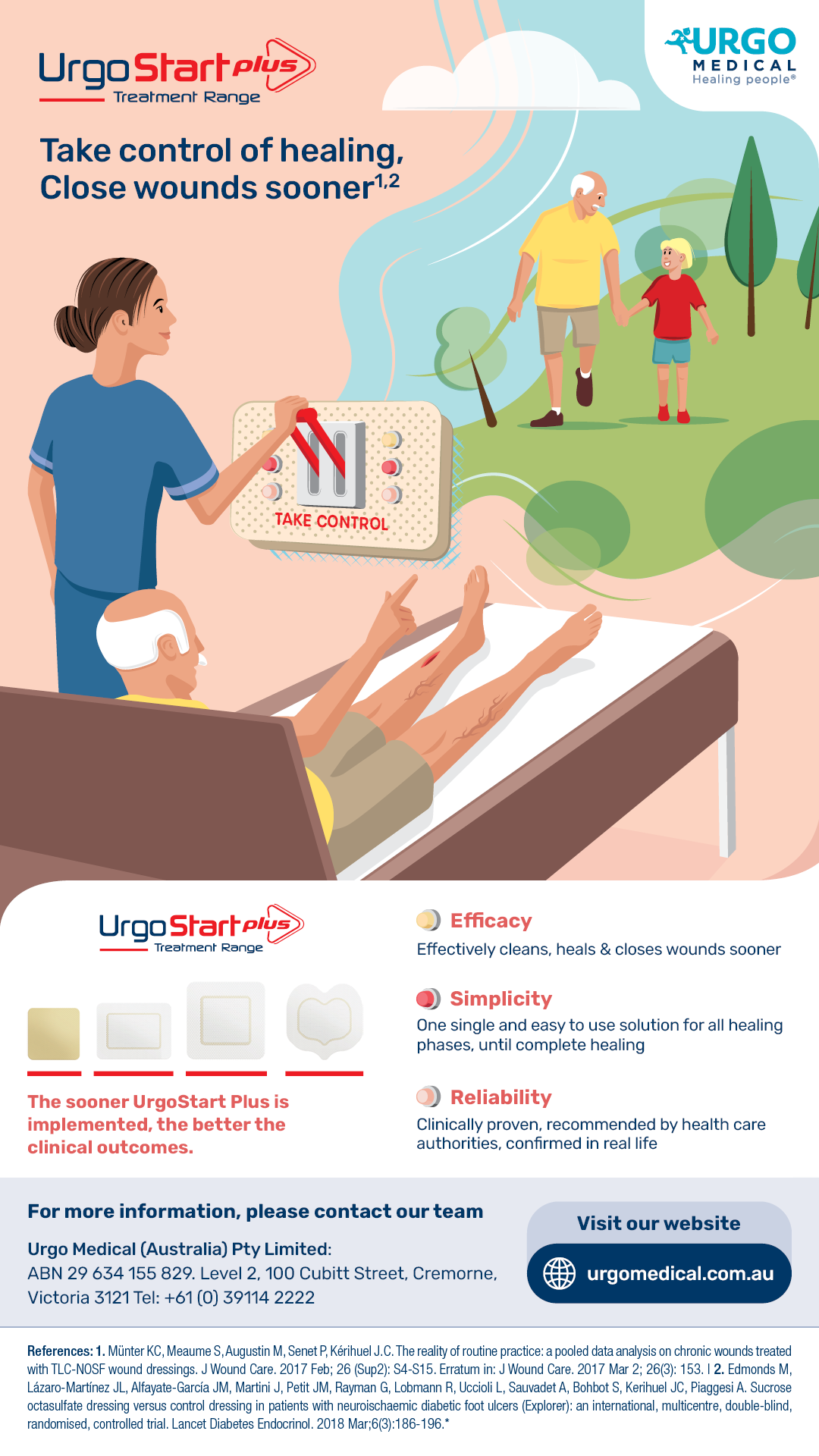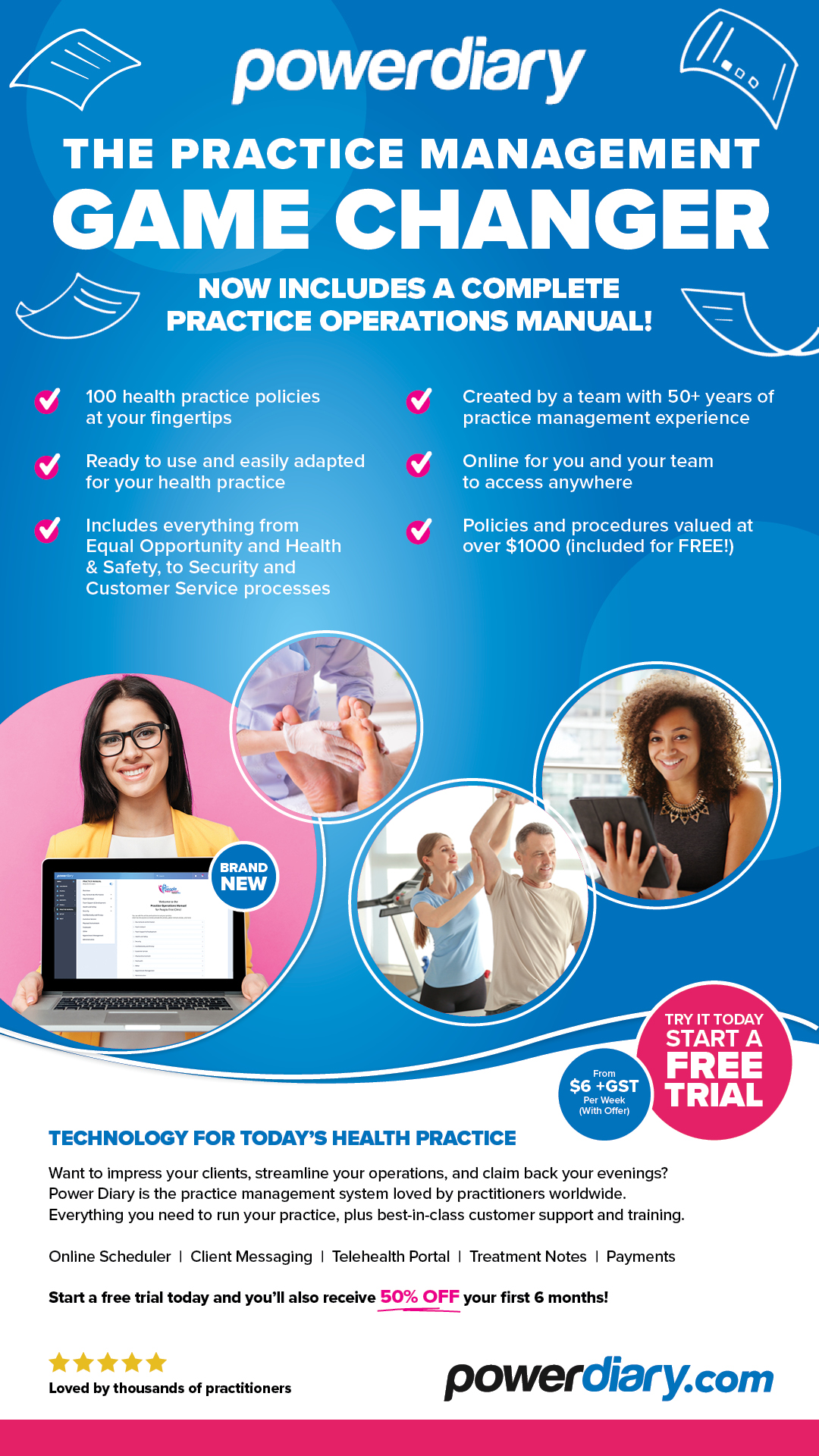
New global study on telehealth in podiatry
A global survey of allied health professionals has revealed that rapid growth in demand for online podiatry appointments is continuing after COVID-19 restrictions are lifted, with more than half of practitioners now offering telehealth services.
Australian practice management software company Cliniko surveyed 2,654 allied health professionals from 34 countries as part of celebrations to mark the company’s tenth anniversary. The majority of responses came from practitioners and administrators in Australia, the UK, Canada and New Zealand, with practices from Asia, Africa and the Middle East also contributing to the project.
Cliniko found the use of telehealth has at least doubled since the outbreak of COVID, with phone and online appointments now 5.4 times more popular in the UK and 2.6 times more common in Australia.
Of relevance, podiatry has become a popular telehealth service, with 51% of practices now offering telephone and online appointments compared to just 4% prior to the outbreak of COVID.
Cliniko founder Joel Friedlaender said the survey shows some of the ways the allied health sector has stayed ahead of the curve, despite the challenges arising during COVID-19.
“The pandemic has changed so much about our lives, including the way we access health care. A lot of people were surprised that professions like podiatry can be effective via telehealth, but the past two years have shifted these perceptions,” Joel Friedlaender said.
The study shows allied health practices have been resilient in the face of massive disruptions, with up to half continuing operating during COVID-19 restrictions despite only being able to offer telehealth services, and less than three per cent closing their doors for good.
A range of insights have been revealed about the allied health sector, revealing the average business employed just over three practitioners. This is demanding practitioners take on a wide range of duties, with one-quarter of businesses not employing any administrators, nearly half not employing a bookkeeper and two thirds not outsourcing any roles.
The data shows that word of mouth is key to growing allied health businesses, accounting for the majority of new referrals to many services. Patient referrals were found to be particularly valuable for podiatrists, with one-third of new clients coming through personal recommendations, compared to 22% through professional referrals.
The study also revealed a high level of ambition amongst the allied health workforce, with more than one-quarter of podiatrists expressing a desire to achieve senior practitioner status.
Despite the challenges arising from the pandemic, the survey insights show that the vast majority of employees are settled in their roles and believe they are well remunerated.
“We know that COVID has placed a lot of additional pressures on healthcare workers, so it’s very positive to learn that so many practitioners have adapted and are still progressing with their work,” Joel said.

What is being done about workforce issues
Great workplaces are putting out the call to hire podiatrists and yet they’re receiving few responses. So, what is going on? These anecdotal challenges point to a more complex and systemic workforce issue across many sectors. Here’s what is happening and what is being done about it.
Recent STRIDE magazine articles have covered workforce issues and we’re looking to ramp up our commentary on this topic, given it affects so many members. No doubt you are already familiar with stories around the difficulties in hiring podiatrists for roles which, theoretically at least, should be easy to fill. Not only are great workplaces finding it tough to hire podiatrists, but it reminds us why we work so hard to promote podiatry as widely as possible. We want as many people as possible to understand (and be inspired by) the countless positive impacts that podiatric intervention can have on a person’s entire health and wellbeing.
The background
The background so far is that recent university enrolment data has indicated a significant and concerning decline in the number of students choosing to study podiatry. One Australian university for example has gone from a regular intake of around 100 students per year down to 40 per year.
There are also ongoing challenges in retaining podiatrists over the longer term and creating expanded career opportunities for practitioners.
Added to this, we need to appreciate the wider context that points to similar shortages across many sectors, both within and beyond the healthcare professions. For many economic and geopolitical reasons, workforce shortages are being experienced across multiple sectors on a global scale. Such complexity raises interesting questions around accountability and action when it comes to how we deal with this issue.
One thing is clear: this is not an issue with a short term solution. We are looking at many years ahead of us as we work to attract school leavers – and other potential students at different life stages – to the profession; as well as to retain podiatrists over the long term. We are also looking at a collaborative effort between a range of stakeholders to explore the underlying issues and options, ideally funded by government support. None of these developments will happen overnight. This complex challenge requires the engagement of key stakeholders, and it must be set against the context of global workforce shortages.
Over the coming months, the APodA is undertaking a comprehensive environmental scan to help us better understand the problem and potential solutions associated with workforce maldistribution and shortage. Understanding the complexity and depth of workforce recruitment and retention is an important first step, and it sets the scene for future roundtable discussions with key stakeholders.
University enrolments in focus
In response to the immediate issue of boosting university enrolments, the Australasian Council of Podiatry Deans (ACPD) is working with the APodA to collaborate on a strategy which addresses this issue and related issues around workforce attrition.
Short term goals
Short term strategic goals land squarely with communication and education-based initiatives that target a range of potential students; including school leavers, students transitioning from TAFE and older students looking at a career change. The goal being, to encourage these individuals to study podiatry as their career choice. Such resources have been syndicated across multiple public-facing platforms such as Foot Health Australia, social media platforms, additional websites and email content.
Long term goals
Longer term goals require strategies that extend outward via our member network, so that podiatrists themselves can promote the benefits of podiatry as a career choice, first-hand to potential podiatry students who span a range of life ages and stages.
This will come into effect over the coming months and years in several ways, such as ensuring a consistent rotation of social media campaigns to promote podiatry as a profession and developing a presentation kit that can be delivered virtually to schools (with a live Q and A option). Work also is required in high schools across Australia and New Zealand, in collaboration with careers officers or equivalent roles. These initiatives will incorporate presentations by podiatrists and promote additional resources such as videos, fact sheets, posters and other printed materials.
Podiatrists at the centre
These goals count on podiatrists to become involved when the time is right. While further information will be shared closer to the activation stage of this strategic plan, you may wish to start to consider the following ways to get involved:
- The APodA will strongly encourage podiatrists to share and promote assets developed by the APodA (that are hosted on Foot Health Australia website) across social networks, within clinics, with patients, and with wider communities.
- Podiatrists will be invited to share their experience of the profession to form a bank of professional testimonials that can be used across podiatry, APodA, Foot Health Australia and university platforms.
- Podiatrists will be invited to speak at high school presentations in collaboration with the APodA and relevant universities to share their personal experience of the profession and answer questions.
If any of the above appeals to you, please register your interest at info@podiatry.org.au and we will be in touch closer to the time with further details.
The rationale behind the plan
Associate Professor of Podiatry at Charles Sturt University, Caroline Robinson, explains the rationale behind these strategic initiatives. “This body of work is helping to tackle what is fundamentally a complex challenge, and we are doing this with very limited resources and a lot of personal commitment. Workforce shortages are not unique to podiatry, but we are working hard to create change, assuring sustainability of our podiatry courses and the future workforce.”
Good news so far
As you may already be aware, early data indicators look good, with the number of registered podiatrists from December 2020 to December 2021 being higher than other allied health career pathways – such as the proportional increase in registered physiotherapists for example, during the same period (5.2% registered podiatrists compared with 3% registered physiotherapists).
More information
This article forms part of an ongoing workforce series in STRIDE where we can explore these challenges and ask some tough questions to make progress as a profession. If you would like to get involved in these initiatives contact info@podiatry.org.au
World Environment Day goals to consider

Feature article: The benefits of patient-centred care

The following article is an excerpt from an ebook written by Shelley Thomson. This article is part two in a four-part monthly series by Shelley which focuses on the nuances that drive patient-centred care, why it matters more than ever, how to better understand these dynamics, and how to measure its effectiveness.
To recap on last month’s article in STRIDE, patient-centred care is also referred to as human-centred care, person-centred care, patient-centric care or consumer-centred care.
What is patient-centred care?
It is essentially an approach to health care that is respectful and responsive to each patient’s preferences, needs, and values. The healthcare professionals working with patients recognise the importance of their input in their care and work in partnership with patients to make shared decisions and build a care plan that reflects the preferred outcomes of the patient.
One of the critical shifts in the concept of patient-centred care is that the patient takes a more proactive role in their healthcare – such as asking questions, doing research and making informed decisions and even refusing treatments they are not comfortable with. This patient-centred approach is a departure from the ‘paternal’ model of care, which has been the traditional model in many healthcare settings where the doctor knows best and sets the care agenda on the patient’s behalf.
It’s important to remember that patient-centred care is a journey, not a destination – patient needs and expectations are constantly changing. It is essential to keep asking patients about their experiences and evolving services to meet their needs.
Mapping out the benefits
When it comes to the benefits, research on patient-centred care and patient-centred communication has matured markedly in the past decade. Numerous well-executed systematic reviews demonstrate the positive impact of patient experience on clinical outcomes across a wide range of disease areas, clinical settings, and population groups, primarily attributed to patient engagement and process improvement.
#1 Sustainable, quality-driven growth
Over years of working with healthcare organisations undergoing the process of patient-centred transformation, my colleagues and I have witnessed that a patient-centred approach delivers a more sustainable way to grow a healthcare practice – improving quality, safety and efficiency all while reducing costs. And most significantly, the patient-centred care model increases patient satisfaction, improves the perception of healthcare organisations within the community, leads to reduced readmission rates, shorter stay lengths and lowers the risk of acquired infections.
#2 Engaged & retained staff
The care approach benefits practice staff, too. Multiple studies suggest that a patient-centred care model supports workplace well-being, promotes a positive staff attitude and reduces stress. It puts the focus of the healthcare professional back on the patient’s care, the reason they entered the healthcare profession in the first place.
#3 Better clinical outcomes
Most importantly, patient-centred care helps improve clinical outcomes. Patient-centred care entities order fewer diagnostic tests and require fewer referrals. The patients themselves are more proactive and likely to adhere to treatment plans, improving patient outcomes. Undoubtedly, adopting a patient-centred approach increases the value of care to your patients.
But the question is, will your place of work lead the way or lag?
Next month: How to measure patient-centred care
The story behind the new diabetes toolkit


Culturally safe podiatry services improve outcomes for Aboriginal and Torres Strait Islander peoples
Yarning about foot care: evaluation of a foot care service for Aboriginal and Torres Strait Islander Peoples. West, M., Sadler, S., Charles, J., Hawke, F., Lanting, S., Munteanu, S., Chuter, V. J Foot Ankle Res 12:25 (2022)
This month’s focus is on a study by Matthew West and colleagues which sought to evaluate the Buridja Clinic from an Aboriginal and Torres Strait Islander perspective using culturally appropriate research methods.
We recommend reading the entire piece, which can be accessed for free here.
Almost 70% of preventable hospitalisations are due to diabetes complications for chronic conditions for Aboriginal and Torres Strait Islander Peoples, with the likelihood of diabetes-related foot disease (DFD) increased by five-fold relative to non-Indigenous Australians.
The lack of availability of culturally safe foot care services, and the effects of ongoing dispossession and distrust of Western healthcare systems, linked to institutional and historical racism, have been identified as key contributors to worse DFD in Aboriginal and Torres Strait Islander Peoples.
In 2018 the Buridja Clinic was established in the Discipline of Podiatry at the University of Newcastle, Australia, to deliver a culturally safe foot care service that is focused on DFD prevention. The aim of this study by Matthew West and colleagues was to evaluate the Buridja Clinic from an Aboriginal and Torres Strait Islander perspective using culturally appropriate research methods.
A mixed methods study took place at the Buridja clinic, whereby quantitative data was collected over a two-year period using a clinical audit. While qualitative data was gathered using weekly research yarns. Yarning is an Aboriginal and Torres Strait Islander way of storytelling, teaching and learning that is a collaborative dialogical progression. It is a research method defined as being a conversation with a purpose (with similarities to a semi-structured interview) that applies storytelling and actively listening to collecting information.
A total of 58 clinical sessions were run in the Buridja Clinic and 199 individuals attended during the testing period. The most common reasons for visiting the clinic were for general foot care (69%, n = 36), diabetes assessment (65%, n = 32), diabetes education (23%, n = 12), footwear referral (21%, n = 11), foot orthoses (10%, n = 5) and nail surgery (2%, n = 1). From the research yarns, participants reported that they were satisfied with the design of the clinic. Successful elements of the clinic related to interaction with the students, the clinical environment and improved health literacy with recognition of the clinic as helping to reduce their fears of poor health outcomes. Overall, the study found that people who attended the clinic reported improved foot health, greater foot and self-care knowledge and overall better general health and management. To read the full article, head here.

These are locations where podiatry service provision takes place. These are locations where everyone is sharing and learning. Students, teachers, patients, non-Indigenous people, and First Nations people, learning from each other, and learning from Country.
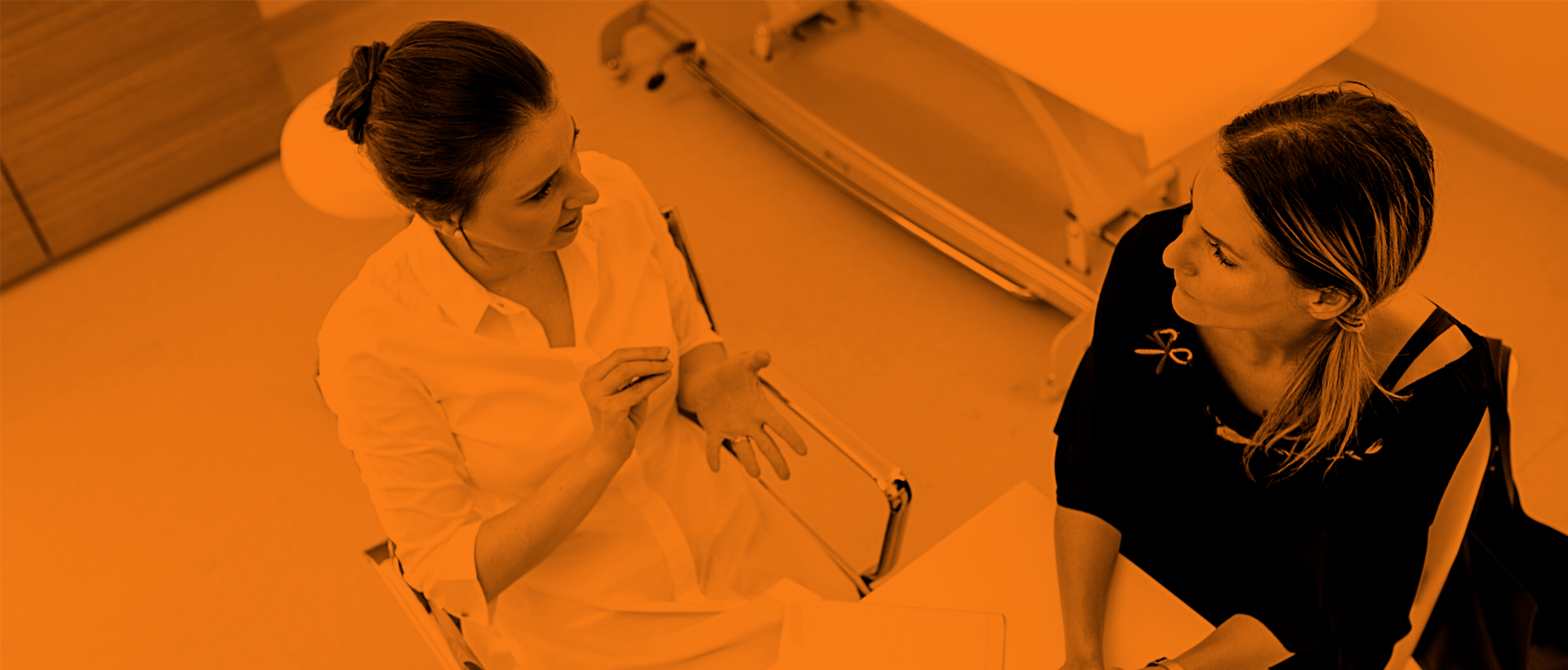
When communication becomes miscommunication
The team at health law firm, Barry.Nilsson. Lawyers, outlines what to do in the event of miscommunication at work, and how to avoid it where possible.
This article has been facilitated with thanks to APodA’s trusted insurance partner, BMS.
As a podiatrist, you understand just how much communication with your patient is of utmost importance. Not only this, but it’s crucial to have a thorough understanding of your obligations regarding effective communication.
Effective communication professional obligations
The Podiatry Board of Australia’s Code of Conduct (Code) sets out a podiatrist’s professional obligations with regards to engaging in and maintaining effective communication with patients and other treating practitioners.
These obligations aim to promote good communication between a podiatrist and their patient to ensure a patient is fully informed and understands all aspects of treatment.
To get a deeper understanding of what this means, let’s examine a clinical scenario.
Clinical scenario for context
John attends an initial consultation with a podiatrist, Olivia. He presents with stabbing heel pain which started when he began to train for a half marathon. John tells Olivia that he has never seen a podiatrist before and initially consulted his general practitioner who prescribed him anti-inflammatories, yet they were ineffective. John asks if Olivia would mind sending a letter to his general practitioner after this consultation. Olivia brushes off this comment and responds along the lines of, ‘GPs are useless at dealing with heel related aches and pains.’
Olivia conducts an assessment and diagnoses John with plantar fasciitis. During the assessment, John explains to Olivia in addition to his half marathon training, he also stands all day in his casual role at a supermarket. Olivia says, ‘You’ll need to ease up on that, it’s the cause of the plantar fasciitis’. Olivia prescribes anti-inflammatory medication and provides John with some home-based exercises and stretches.
John completes the recommended exercises and stretches daily. He also cuts down his shifts at the supermarket as a result of Olivia’s comment to ‘ease up’. John does not fulfil the anti-inflammatory prescription as these did not ease the pain last time.
In a fortnight, John returns for another consultation with Olivia and reports his heel pain is, ‘Similar, if not a bit worse’. He advises that he completed the exercises and stretches daily and has been continuing with his running training.
Olivia responds, ‘You’ve been running? I told you to ease up.’ Olivia advises John to stop running for the next month and continue with the prescribed exercises and stretches.
After this consultation, John sees his general practitioner who says he never heard from Olivia. John is annoyed at Olivia’s treatment, in particular that she failed to contact his general practitioner and the instruction to ‘ease up’ was not clear, which meant he reduced his hours of work. He makes a complaint against Olivia.
Learnings and safeguards
What can we learn from this? Well, the scenario of Olivia and John reveals a number of common communication errors.
Breach of communication obligations
Olivia breached her communication obligations by:
- Not discussing with John exactly how his general practitioner planned to manage his condition or any medications he had been prescribed.
- Olivia’s comment regarding general practitioners reflects a breach of her communication obligations as she has shown a lack of respect for John’s views and preferences to have his general practitioner also involved in the treatment of his plantar fasciitis.
Miscommunication
Olivia’s comment about ‘easing up’ on his running caused some miscommunication. Notably, Olivia has not been aware of John’s health literacy, that is, John’s ability to understand the information provided by Olivia, noting that John has not attended a podiatrist previously. Olivia should have been especially cautious to confirm that John understood what she said.
Where to from here
Podiatrists have a responsibility to ensure that all communication with patients is effective and clear. Breaches of communication obligations can lead to distrust and a breakdown in the treating relationship between a podiatrist and their patient, as seen in Olivia and John’s situation.
So, how can we better safeguard against such outcomes? Here are some examples on an individual level, many of which you no doubt do already:
- Make ongoing enquiries into how the patient is managing their condition
- Employ clear and straightforward language when speaking with patients
- Request that a patient confirms what a podiatrist has said
- Understand a patient’s health literacy and adapt your communication style accordingly
- Spend time reflecting on your own communication style and undertake mentoring if you wish to troubleshoot any particular areas
When it comes to safeguards on a practice-wide level, here are some suggestions to consider:
- Consider communication training for all new staff to better understand different communication styles and professional obligations.
- Organise regular staff meetings to discuss effective communication and how to best communicate with a variety of patients and health practitioners.
- Develop and implement communication policies and procedures, including ones that focus on effective communication with other health practitioners, and also effective patient communication in regards to understanding their full health history.
What to do if miscommunication happens
If you are involved in a miscommunication, or you are unsure how best to discuss a particular health concern with a patient, then seek assistance from the APodA, senior colleagues or trusted peers.
If the miscommunication leads to a complaint or claim, please contact your insurer immediately.
Disclaimer
Barry.Nilsson. Lawyers communications are intended to provide commentary and general information. They should not be relied upon as legal advice. Formal legal advice should be sought in particular transactions or on matters of interest arising from this communication. BMS Risk Solutions Pty Ltd (BMS) AFSL 461594 ABN 45 161 187 980 is the official and exclusive insurance broker for the APodA member insurance program.
© BMS Risk Solutions Pty Ltd 2022
Meet your researchers

Good news to share on the charity front!

CEO of Footscape, Anthony Lewis, shares some good news with STRIDE readers
Good news! Footscape is celebrating 50,000 podiatry material aid items having been distributed to people experiencing disadvantage. That is quite a milestone to share with our STRIDE readers, who have supported us by following our adventures.
Since 2013 our charity has been providing footwear, socks, foot care kits and orthotic devices to identified homeless persons, asylum seekers, Aboriginal persons, financially disadvantaged children and victims of domestic violence at over sixty affiliate organisations. The Melbourne-based Cohealth Podiatry homeless service was the first project affiliate organisation to receive our material aid items to benefit their patients.
Cohealth Podiatrist Rebecca Mannix has highlighted the value of Footscape contributions to their service:
People that are homeless use their feet as their primary mode of transport – to get food, attend appointments, for exercise to reduce stress or even to keep warm when it’s cold. It’s not uncommon for clients to report walking 10 to 15 kilometres every day, which can put stress on their bodies, especially if carrying all of their possessions. Often our clients report their shoes getting stolen when they are asleep, so many wear their shoes all night, which can lead to bacterial infections – particularly if feet are wet. Footscape’s generous provision of high-quality second-hand shoes has greatly improved our ability to support these clients as they work to achieve their goals. For many clients this reduces their pain levels greatly and they are able to get back into walking. Others join our football team (Cohealth Kangaroos) and use the runners for training – improving their health, self-esteem, building healthy friendships and learning skills such as anger management and working as a team. Without Footscape this would be impossible, and we are extremely grateful, as are our clients.

You can read more about Cohealth in the April issue of STRIDE here.
During the past twelve months, ten additional health and welfare organisations have requested and received Footscape items on behalf of patients and/or clients experiencing disadvantage. These organisations include:
-
-
- Fitted For Work – a Melbourne charity helping women experiencing disadvantage get work, keep work and navigate through working life with success. Their goal is to provide women with practical skills, knowledge, self-esteem and know-how so that they can move forward with confidence in the workplace. Footscape has been donating new footwear as part of the Fitted For Work clothing program.
.. - Wuchopperen Health Service – an Aboriginal health organisation providing comprehensive primary health care services to the Aboriginal and Torres Strait Islander people of Cairns. The podiatry team are utilising Footscape material aid to promote diabetic foot health amongst patients.
- Fitted For Work – a Melbourne charity helping women experiencing disadvantage get work, keep work and navigate through working life with success. Their goal is to provide women with practical skills, knowledge, self-esteem and know-how so that they can move forward with confidence in the workplace. Footscape has been donating new footwear as part of the Fitted For Work clothing program.
-
As a podiatry charity with finite resources, Footscape recognises the importance of collaboration in our strategic plan. Collaboration is a process described by Taylor et al (2021) through which organisations who have different perspectives about an issue, or who can address different aspects of it, can constructively search for solutions together. The solutions will go beyond one partner’s own limited vision of what is possible and intervene more than their own scope of practice.
Collaboration with like-minded health and welfare organisations has allowed Footscape the opportunity to reach and assist thousands of disadvantaged persons across Australia encountering foot pathology. Accordingly, podiatrists working with disadvantaged communities in the far corners of our country are strongly encouraged to reach out to Footscape and benefit from prompt access to material aid items to help their clients.
References:
Taylor, J., O’Hara, L., Talbot L., Verrinder, G. (2021) ‘Promoting Health: The Primary Health Care Approach 7th Edition’ Elsevier, Chatswood

Have you seen the most asked member question lately?
Have you seen the most asked member question lately? Our monthly Member Benefits Bulletin has this covered! We encourage you to keep an eye out for it when it hits your email and in the meantime, head to this webpage for a breakdown of other questions commonly asked by members in months gone by. You never know what you will find!
Here is the most commonly asked member question in recent weeks. Don’t forget to check out our member-only web resource for more useful Q+As!
Question: If a patient purchases a consumable like gel toe sleeves/ID wedges or the like, at the time of their podiatry service do they have to pay GST on the items purchased?
Answer:
It depends. If the consumable was used as part of the podiatry service it is GST free. If the item is purchased over the counter as a take home product not opened, used or modified at the clinic for the purpose of the consult, GST applies. Please refer to the Australian Taxation office website relating to Goods supplied as part of a GST fee health service for more information here.
Below is an excerpt from the above link:
Goods supplied as part of a GST-free health service
A supply of goods is GST-free if it is both:
- a necessary part of providing the GST-free health service
- supplied at the same time and place as the service.
The goods must be either:
- specific to treating the illness or disability of the particular patient
- essential for treating that patient during that particular consultation.
However, there are different rules for:
- optometrists and pharmacists
- herbal medicine practitioners (including Chinese herbal medicine practitioners) and naturopaths.
Example: Supply of goods to a patient: Dr Jones treats a patient’s injury during a consultation by applying a bandage. If the consultation is GST-free, the bandage is also GST-free. However, extra bandages, dressings and antiseptics the patient takes home are not GST-free.

Power Diary releases in-platform health operations manual
We sat down with Damien Adler, co-founder of
Power Diary to find out more about Power Diary’s latest in-platform offering
Q: So, what has been happening lately over at Power Diary?
A: Some pretty exciting developments are taking place. We’ve just released the first in-platform health practice operations manual, which we believe will be a game changer for practice owners.
Q: How does the operations manual work?
A: Not only does it sit within our customer’s existing practice management software platform but it’s adaptable in that it offers a core set of policies and procedures which any practice can configure to meet their needs. Over 100 of these templates are available, which were developed by healthcare practice managers and administrative experts with more than 50 years of combined experience. We’re proud of the work that has gone into it and really believe it will greatly benefit Power Diary practitioners and business owners.
To put this into context, let’s say you’re looking to devise policies around team support and development, or customer service, or confidentiality and privacy – this in-platform manual contains this information, all ready for you to use. Not only this, but it’s completely configurable to suit your own practice.
Q: How does it work exactly on a day to day basis?
A: Well, we knew accessibility was key, so not only can you change existing content, add in words, or archive and delete items; but these templates are easily accessed by all staff. This means no more sharing different versions of different draft policies with colleagues. Now everyone in the practice can log in and access the same policy, no matter which stage of drafting it’s at. So if any content changes require review by other colleagues, it’s all there in this one centralised place to access in real-time. Then once everyone is happy with the final draft, it becomes an official policy or procedure, stored in the same platform for reference. This offers a much simpler way to draft and finalise policies and procedures; best of all, you’re working with templates that have been written by experienced health professionals. The hard work has already been done, and that’s where the value lies.
Q: Who do you think will benefit most from this product?
A: Broadly speaking, we’re really excited about the potential of this operations manual for all practice managers. But even more specifically, we know this product will connect with new and established practitioners who perhaps seek guidelines, protocols and best practices for their own practice. It’s about streamlining these processes through one central offering and the benefits are tangible when it comes to quality improvement, patient care, and cost control.
Q: Where can people go to learn more?
A: Head to powerdiary.com and all the information is there. From there, you can access a free 14 day trial, and the team at Power Diary will even migrate your data and provide training free of charge. Plus, if you decide to continue using Power Diary you’ll receive a special offer of 50% off your first six months.
More information
Head here to read Power Diary’s latest practice management blog on why they believe a practice operations manual is a must for any clinic.
STRIDE is exploring the latest products and solutions from industry brands that may support our members and the profession. Please note, the information in this article is provided by the brand and is not an opinion or recommendation of the APodA. If you are a member, you may be able to promote your product in STRIDE as part of your member value offering. Contact siobhan.doran@podiatry.org.au for more details.

How to conduct a performance appraisal

A performance appraisal, or performance review, is the process an employer can use to assess an employee’s performance so that personal and organisational goals can be achieved. It is also a great opportunity to recognise an employee’s performance and reward success, or alternatively develop plans to improve underperformance.
This article will discuss how a business can implement a performance appraisal process, what a performance appraisal meeting looks like, and the benefits of doing so.
Performance appraisals should occur regularly – at the very least on an annual basis. To prepare for the appraisal meeting, the performance appraiser should develop the criteria that the appraisal will be based on. The best way to do this is by reviewing the employee’s job description. Their job description should clearly outline the duties they are engaged to perform, and this allows the appraiser to assess the competency levels required to perform the role.
Moving through their duties, the appraiser can assess at what level the employee is currently performing. If there have been previous performance reviews, their current performance should also be measured against any previously agreed upon goals.
Objective measures of performance such as key performance indicators (KPIs) should be used where possible. This minimises bias, or accusations of bias, so that it’s clear the appraiser has formed their assessment based on objective facts rather than their own opinion.
Where possible, make note of specific instances of high or low performance that can be referred to in the appraisal.
The employee also needs to prepare for the meeting. Specifically, they should be ready to compare their current performance against previous development goals, as well as provide insight into training needs and development or career goals. Some performance appraisals may also involve the employee completing a self-evaluation form prior to the meeting.
The performance appraisal meeting
If this is the first appraisal, both parties should review the employee’s performance against their job description and other competency measures. If previous performance appraisals have taken place, both parties can also evaluate whether previous goals have been met.
Where an employee has met or exceeded performance standards, the appraiser should recognise this. Exceptional performance should be celebrated, and the appraiser should ideally note specific examples. A performance appraisal should be used to commend and reward an employee as much as it should be used to highlight deficiencies in performance.
Nevertheless, an appraiser must be willing to provide honest criticism. If an appraiser is not willing to be honest, they risk being unable to properly salvage performance issues before they become much more serious.
An appraisal should also consider other aspects of an employee’s performance. This includes examining the employee’s current motivation and attitude when working, as well as their fit within the team’s culture. While these are more subjective measures of performance, they can often have significant influence on the employee’s performance and the organisation as a whole.
After this the employee and the appraiser should collaborate on performance and development goals moving forward, settling on a development and improvement plan. These goals should be discretely measurable, reasonably achievable within the time frame, and they will form the basis of future performance appraisals. Additional training or assistance the employee might require should also be discussed.
At the end of the meeting, the employee and appraiser should sign off on the appraisal. This can also serve as documentation the employee was made aware of any performance issues, as well as steps that were taken to address them. Finally, the two parties should agree on the date of the next performance appraisal.
Monitoring the outcomes
It is important to critically evaluate the effectiveness of performance appraisal meetings. As such, it could be appropriate to schedule a follow-up meeting after the appraisal to monitor the employee’s progress and make any necessary adjustments.
Benefits of performance appraisals
Benefits of performance appraisals include:
- Strengthening the employer/employee relationship
- Feedback from the employee can improve job design, the working environment, career planning, etc.
- Identification of training needs, and encouraging employees to take the initiative with steps to improving job performance
- Allowing grievances to be raised and resolved before they deteriorate further
- Regular documentation of high performance or underperformance.
In summary
Performance appraisals are an important part of managing employees, and they shouldn’t be left until the employee is underperforming. Implementing regular performance reviews improves communication with employees and helps maintain strong performance across your team.
Need more information?
For more information about this article, please contact the APodA HR Advisory Service on 1300 620 641 or hrhotline@podiatry.org.au. A suite of online resources is also available for members 24 hours a day, seven days a week here.
Disclaimer









